The week at a glance
- Common Yellowthroat in Gwent
- Northern Waterthrush still on Scilly
- Greater Yellowlegs again in Highland
- Two-barred Crossbills in West Yorkshire and Norfolk
- White-tailed Eagle in Kent and Norfolk
- Spanish Sparrow and Dark-eyed Junco still in Hampshire
A week of changeable weather conditions hinted that, for the first time, spring was just around the corner. The birds also seemed to sense change, with a notable overhaul in the makeup of British and Irish rarities this week suggesting a response to the lengthening days and milder temperatures.
The week was highlighted by the momentous finding of a young male Common Yellowthroat in a rather unlikely-looking collection of fields and hedgerows at Rhiwderin (Gwent), presumably displaced southwest by the recent freezing conditions. It was initially found a few days earlier, but identification was confirmed and news released late on 16th. Fortunately, the bird was still present and showing well at times the following day. Negative news throughout the morning on the Saturday suggested the bird was the latest in a long line of rarities to do a 'Friday night bunk', but it was relocated during the afternoon as the weather cleared, and continued to show well for the rest of the week.
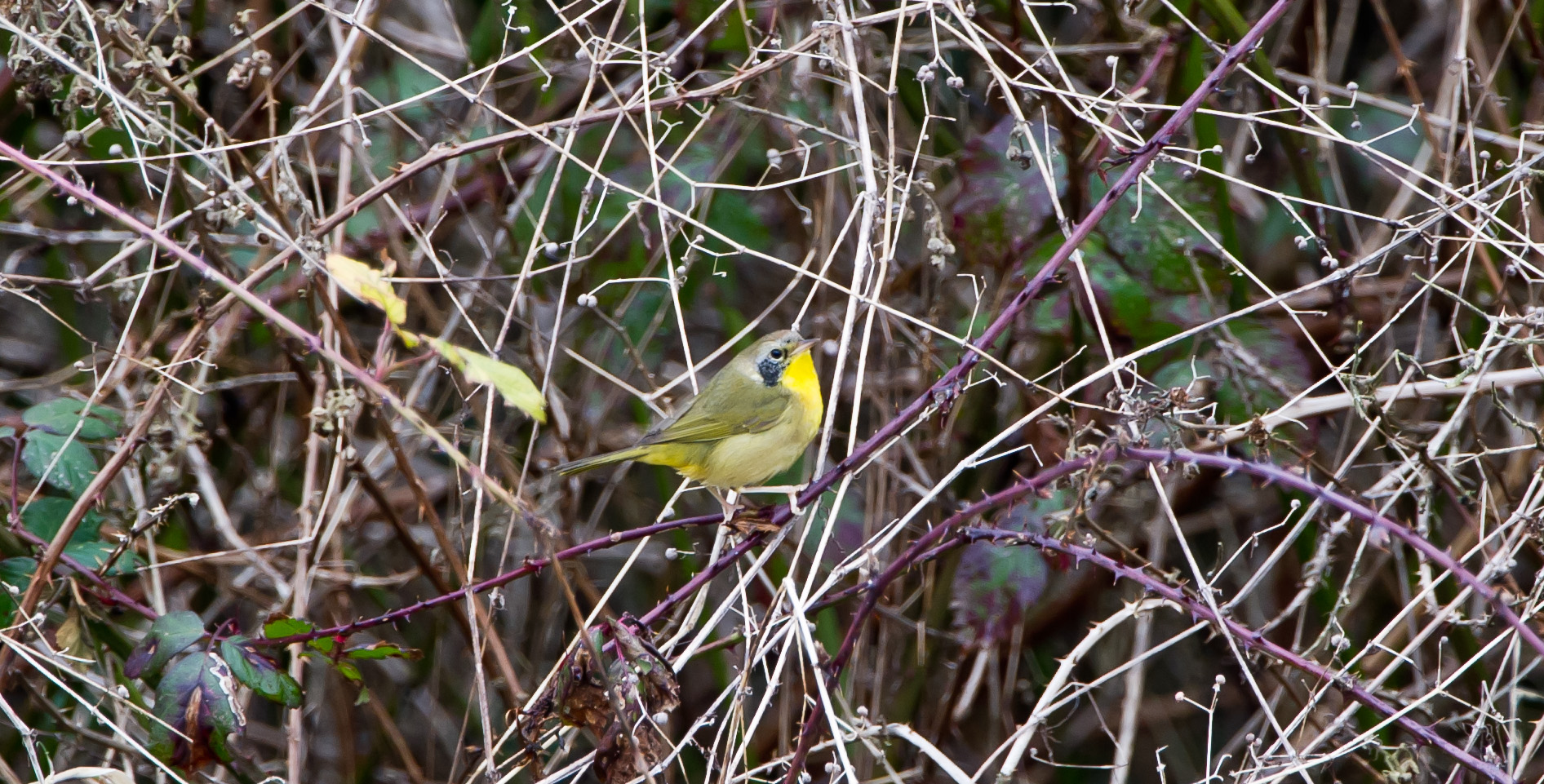
Common Yellowthroat, Rhiwderin, Gwent (Photo: John Stanton)
Down on Scilly, the wintering Northern Waterthrush also appears to have successfully survived a Western European winter: it was still bobbing around Lower Moors, St. Mary's on 17th. Alongside the Yellowthroat it suggests tantalisingly that, in what has been an unusually mild winter, we must only be seeing the tip of the iceberg with regards to wintering Nearctic passerines.
Despite earlier reports to the contrary, an apparently born-again Greater Yellowlegs at Dornoch (Highland) seems to have miraculously recovered from predator attack and any consequent injuries it had sustained: it was happily poking around in flooded fields during the afternoon of 20th.

Greater Yellowlegs, Dornoch, Highland (Photo: Tony Mainwood).
Meanwhile, Hampshire clung on to its old favourites: the Spanish Sparrow was still looking relaxed in hedges and gardens at Calshot throughout the week while the Dark-eyed Junco was still at Hawkhill Inclosure, although at times proved elusive.
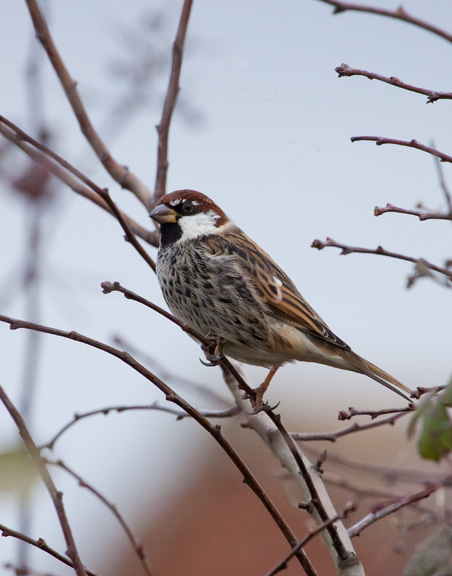
Spanish Sparrow, Calshot, Hampshire (Photo: Phyl England)
The adult Lesser White-fronted Goose was still with Taiga Bean Geese at Buckenham Marshes (Norfolk) to 17th. Most of the flock has since left, and it seems reasonable to assume that the Lesser White-front has also departed. The Ross's Goose was still with Barnacles at Caerlaverock (Dumf & Gall) to 20th, while at least two were still touring Norfolk. The only Snow Goose report this week concerned the reappearance of the Cumbrian blue morph, which was located among the Pink-footed Geese on Newton Marsh on 19th.

Ross's Goose, Caerlaverock WWT, Dumfries & Galloway (Photo: Bob Fitzsimmons)
Black Brants were represented by the continuing adult at Penhill Marsh (Devon) on 17th, two at Gibraltar Point (Lincs) to 21st and singletons at Kelling (Norfolk), and Holland Haven and Heybridge (Essex). Richardson's Canada Geese remained on Islay (Argyll) at Loch Gruinart on 19th and Bowmore on 17th–21st, with the usual bird still at Torr Reservoir (Somerset) throughout. The Todd's Canada Goose was again seen near Belmullet (Mayo) on 22nd. Another remained among Barnacles at Loaningfoot (Dumf & Gall) to 19th, with the continuing Red-breasted Goose often alongside. Others were still with Dark-bellied Brents on the Exe Estuary (Devon) to 18th and at Felixstowe Ferry/Kirton (Suffolk) to 21st, while the Essex bird toured Holland Haven, Old Hall Marshes and The Naze to 19th.

Richardson's Canada Goose, Bowmore, Islay, Argyll (Photo: Steve Percival)

Red-breasted Goose, Felixstowe Ferry, Suffolk (Photo: Barry Woodhouse)
A drake American Wigeon was new at Bay of Suckquoy (Orkney) from 19th, while others remained on the Exe Estuary (Devon) to 20th and at Angler's Country Park (W Yorks) all week. A couple of hybrids were also reported at Rahasane Turlough (Galway) and on the Lune Estuary (Lancs); the latter was initially reported as a pure americana. A drake Green-winged Teal at Belclare Turlough (Galway) on 19th is presumably a returning bird from last winter, and another at Loch of Kinnordy (Angus & Dundee) on 22nd was also new. Others were still in residence at Eyebrook Reservoir (Leics), Fairburn Ings (W Yorks), East Chevington and Holy Island (Northumberland), Mersehead (Dumf & Gall), and Kinneil Lagoon (Forth).
The female/first-winter Bufflehead continued to perform at Helston Loe Pool (Cornwall) to 21st. Also in the county, the young drake Lesser Scaup relocated from Siblyback Reservoir to Newquay during the week, where it showed superbly on Trenance boating lake to 21st. Also showing well were the drake at Cosmeston Lakes (Glamorgan) throughout and the female at Slimbridge (Glos) to 20th, although new drakes at Round Lough (Cavan) 19th and St. John's Loch (Highland) on 21st were likely more distant, as was the continuing bird at Lough Gill (Kerry) on 17th.

Lesser Scaup, Newquay, Cornwall (Photo: Tony Mills)
Another widespread showing of Ring-necked Ducks included the two drakes still at Chard Junction (Dorset) to 21st. Other British records concerned lingering birds at Hatfield Moors (S Yorks) to 19th, Par Beach (Cornwall) and Trabboch (Ayrshire) to 21st, Coot Loch, Benbecula (Outer Hebrides) on 22nd and Cowpen Bewley (Cleveland) throughout, while drakes were again at College Reservoir (Cornwall) on 19th–20th and Fleetwood Marsh Nature Park (Lancs) on 21st–22nd. Mayo's female relocated from Emlagh Lough to nearby Cross Lough on 18th–19th, with the Down drake popping up at Lough Money from 17th. Others were still at Ballyshunnock Reservoirs and Knockaderry Lake (both Waterford) to 18th and Lough Ennell (Westmeath) on 19th. The sole Ferruginous Duck record involved the Berkshire drake relocating to Bray Gravel Pits from 16th.
A drake Surf Scoter off Buckhaven (Fife) on 18th was the only new bird of the period, although a reasonable showing of continuing birds included those still off Garretstown (Cork) on 19th, Morfa Nefyn (Gwynedd) on 18–19th, Dawlish Warren (Devon) to 20th and Long Rock (Cornwall) to 21st. A White-billed Diver was recorded off Hamars Ness, Fetlar (Shetland) on 18th.
The only Cattle Egret reported this week was the usual roosting bird again at Hillsborough Lake (Down) on 19th–20th. Kent claimed the lion's share of Great White Egret records, with at least six including two at Conningbrook Gravel Pits near Ashford on 19th. Two were still at Ham Wall (Somerset) on 19th, with two more still in the county at Sutton Bingham Reservoir throughout. The sole Welsh record concerned the lingering bird at Llangorse Lake (Powys), while one flying over Dundalk (Louth) on 18th was the only report from the Emerald Isle.

Great White Egret, Graveney Marshes, Kent (Photo: Mike Gould)
The White Stork was still grubbing about on the landfill site at Kirkby-on-Bain (Lincs) all week, while the escapee was again at Sookholme (Notts) on 21st and two were reported over Wark (Northumberland) on 19th.
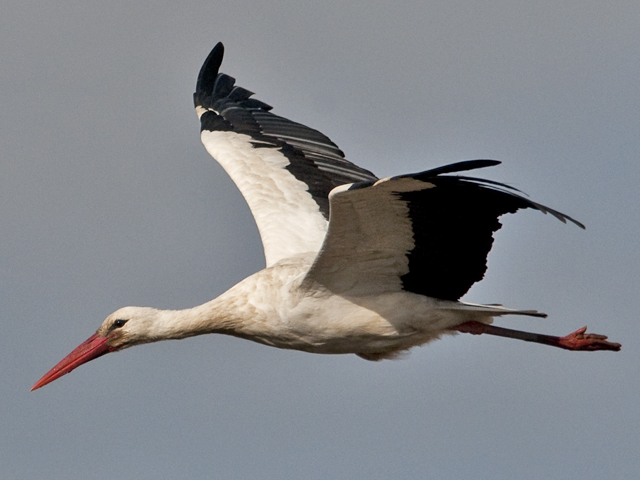
White Stork, Kirkby on Bain GPs, Lincolnshire (Photo: Trevor Gunby)
Glossy Ibis numbers again reduced, with three again at Marloes Mere (Pembrokeshire) on 18th being the largest concentration. Two were reported by a farmer at Llancadle (Glamorgan) on 20th–21st with one lingering to 22nd, and Welsh records were completed by the continuing bird at Borth (Ceredigion) to 21st. Two new English records concerned one over Brundall (Norfolk) on 17th and another briefly at Ouse Fen (Cambs) on 19th. One was still showing well at Radipole Lake (Dorset) on 16th, with it or another at Wareham from 18th. Also in the southwest, one was still at Thurlestone (Devon) on 16th and another again at Catcott Lows then Shapwick Heath (Somerset) on 18th–20th. Finally, the long-stayer was still at Leighton Moss (Lancs) to 21st.

Glossy Ibis, Wareham, Dorset (Photo: Peter Moore)
After frustrating both Bedfordshire and Hertfordshire listers last week, the immature White-tailed Eagle was still proving rather restless. It was still at Walland Marsh (Kent) on 16th before disappearing, only to be seen over Saltwood on 19th. Although not seen, it must have been in Essex and Suffolk airspace on 20th, for it had reached Ormesby St. Margaret (Norfolk) by 21st, roosting there overnight before moving to nearby Ingham mid-morning on 22nd. It then promptly disappeared once more and, with its behaviour erratic to say the least, predicting where it will pitch up next seems something of a lottery. The wintering Pallid Harrier was still roosting at Lough Corrib (Galway) on 19th, although it is often both distant and elusive.

White-tailed Eagle, Rye, East Sussex (Photo: Martin Casemore)
A similar showing of Rough-legged Buzzards to previous weeks included the Northern Irish individual finally pinned down around Strangford Lough (Down) from 18th, much to the delight of local birdwatchers. Norfolk continued to host at least four birds including two still at Holkham, while new birds were in Suffolk and Essex. Two were still at either side of the Woodhead Pass at Broomhead Moor (S Yorks) and Arnfield Reservoir (Derbys) during the week, although the only Scottish record concerned a lingering bird at Hermaness, Unst (Shetland).
An American Golden Plover was near Davidstow (Cornwall) on 17th, relocating to nearby Crowdy Reservoir on 19th. Given the species' regularity in autumn and the abundance of Golden Plovers throughout the British and Ireland in winter, it seems strange that winter records are not more frequent — perhaps the birds simply prefer warmer climes. Spotted Sandpipers continued on the Plym Estuary (Devon) to 16th only and at Stanpit Marsh (Dorset) all week, although there were no reports of the Ayrshire Pectoral Sandpiper. Two Long-billed Dowitchers remained at The Cull (Wexford) to 18th, with the Kidwelly (Carmarthenshire) bird still there to 19th. A Stone Curlew heard over Birdham (W Sussex) on 21st may have been last week's individual from Angmering, or simply another early migrant.

Long-billed Dowitcher, Kidwelly, Carmarthen (Photo: Andy Booth)
Cardiff Bay (Glamorgan) scored a Bonaparte's Gull bonanza this week. One sharp-eyed yellowthroat twitcher looking for the usual adult chanced upon a rather smart first-winter in the exact same spot that the original bird had been frequenting during the late afternoon of 17th, although it was not seen again. Remarkably, it was replaced by the adult once more on 18th–20th!
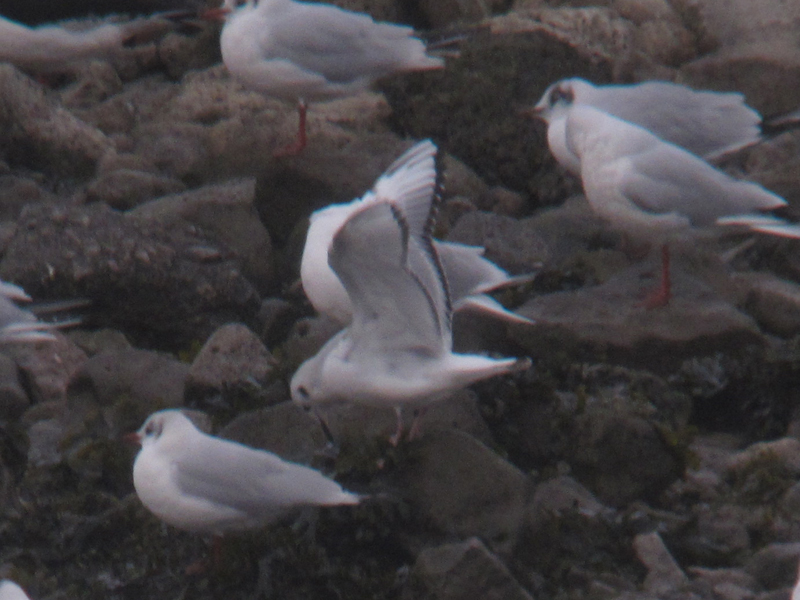
Bonaparte's Gull, Cardiff Bay, Glamorgan (Photo: David Campbell)
A possible second-winter Azorean Yellow-legged Gull was reported in the Draycote Water (Warks) roost on 21st, representing yet another claim of this largely sedentary taxon in the Midlands this winter. The overwhelming majority of 20 Ring-billed Gulls were in Ireland, where peak counts included three still at Blennerville (Kerry) and twos at Nimmo's Pier (Galway) and Cuskinny Marsh (Cork). New birds were in Arklow (Wicklow) and Barrow Harbour (Kerry) on 18th, Kilmore Quay (Wexford) on 20th and Flaggy Shore (Clare) on 21st. The three British records all concerned long-staying adults: at Seaforth (Lancs) again on 18th, Oban (Argyll) again on 19th, and Chew Valley Lake (Somerset) to 20th.

Ring-billed Gull, Bantry, Cork (Photo: Richard Bonser)

Ring-billed Gull, Chew Valley Lake, Somerset & Bristol (Photo: Rich Andrews)
Presumably because of more unsettled conditions to the north and west, Iceland Gull numbers picked up once more. At least 70 were in the Marwick (Orkney) area on 20th, with 67 in Stornoway Harbour (Outer Hebrides) the previous day. In Shetland, at least 60 were at Lerwick on 19th with an additional 10 Kumlien's Gulls, and 34 were at Symbister, Whalsay on 16th. Irish tallies were again much lower, although 18 at Corbally Road Reservoir (Antrim) on 18th was significant, with smaller totals including 13 from both Castletown Bearhaven (Cork) and Dingle (Kerry). Glaucous Gulls were again present in much smaller numbers, although 11 at Marwick (Orkney) on 20th was a notable concentration. The numbers being found throughout England also continued to increase and, by the end of the week, it was more a case of finding a landfill site without a white-winged gull than one with one!
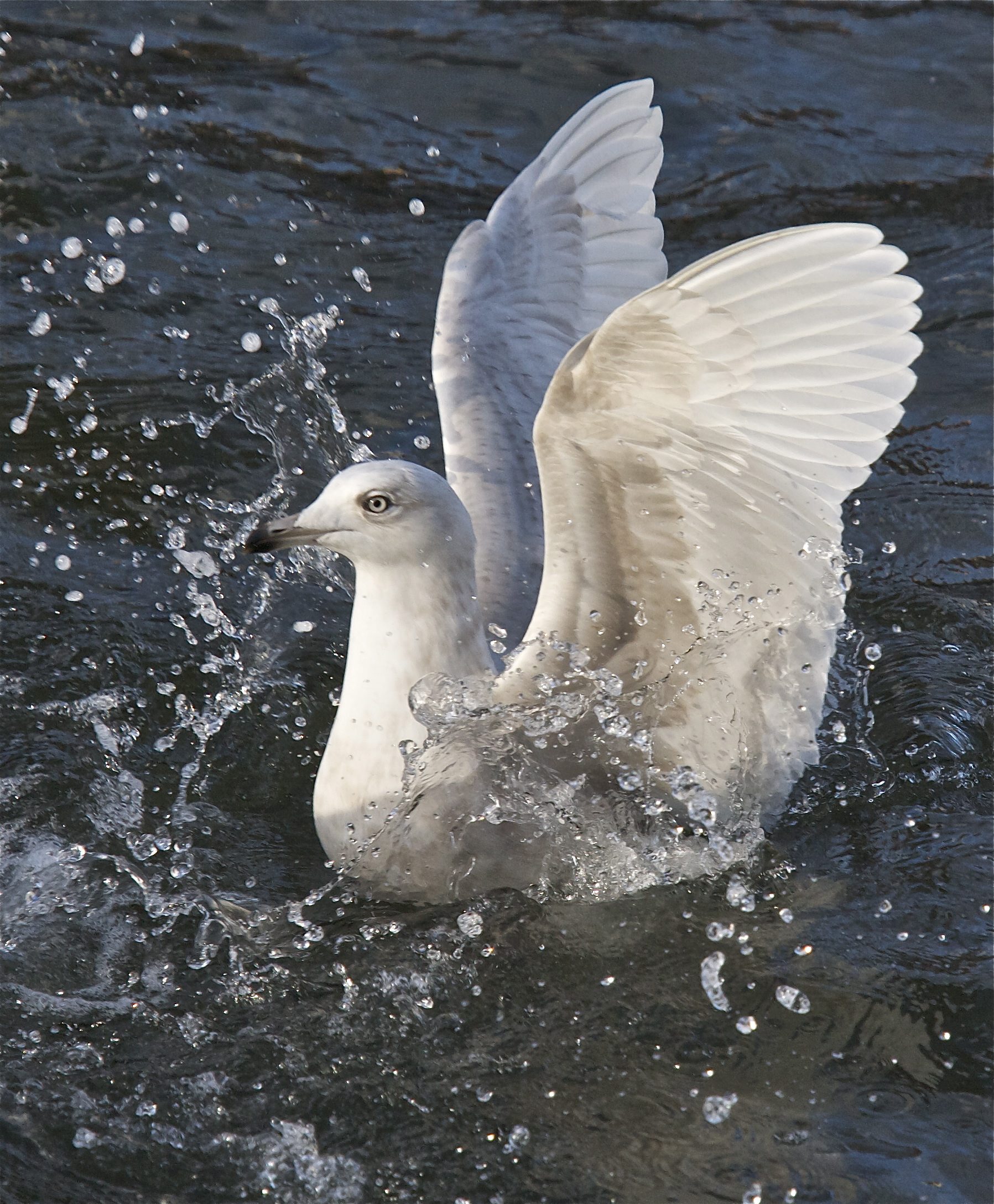
Iceland Gull, North Shields, Northumberland (Photo: E Barnes)
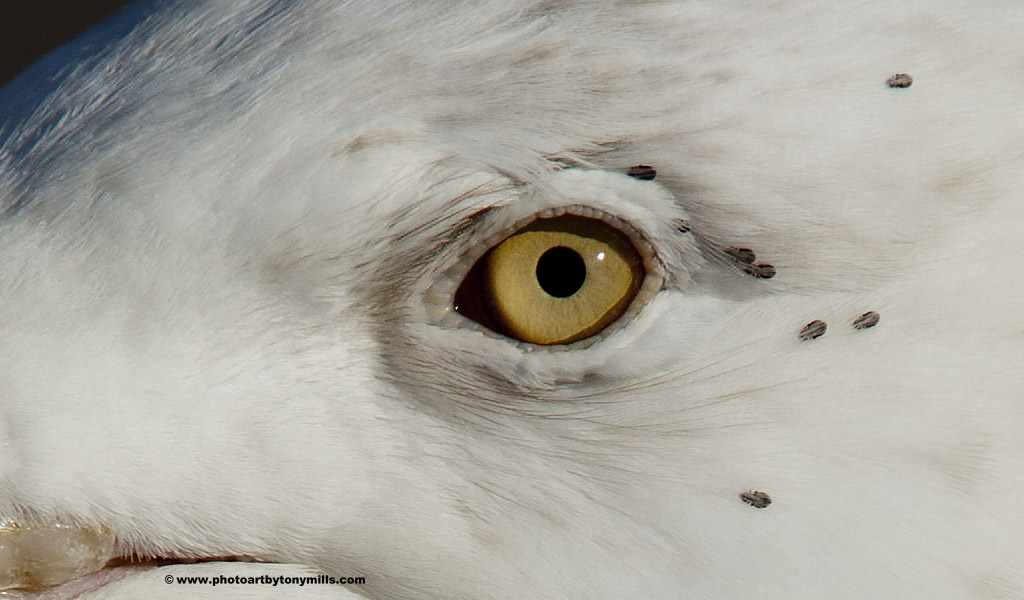
Glaucous Gull, Newlyn, Cornwall (Photo: Tony Mills)
In West Sussex, the Paddyfield Warbler has defied the odds and survived the freezing conditions: it was still at Pagham Harbour throughout the week. Although typically mobile and elusive, it appears to have moved back to North Wall thus allowing much closer views than it has done of late. It's been a fantastic winter for Yellow-browed Warblers in the Southwest, with two new birds at Helston (Cornwall) and another on Tresco (Scilly) on 19th joining the party. Others were still at Carnon Downs (Cornwall) on 17th, Exmouth (Devon) to 20th and Combe St. Nicholas (Somerset) to 22nd, while a possible in Worthing (W Sussex) on 22nd prevented a regional monopoly.
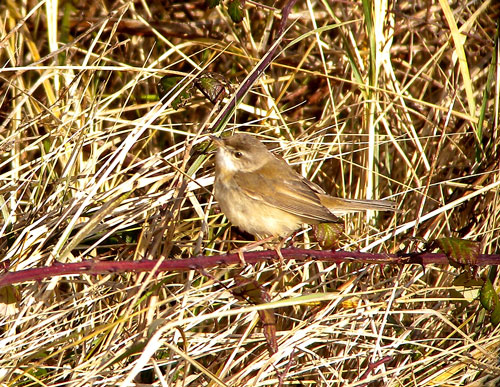
Paddyfield Warbler, Pagham Harbour LNR, West Sussex (Photo: Lynne Demaine)
At least one Northern Long-tailed Tit remained at Luddenden Dean (W Yorks) to 20th, while presumably the usual Penduline Tit was again noted at Dungeness (Kent) the same day. The House Crow was still parading around Cobh (Cork) on 18th.
Twenty-six Great Grey Shrikes were as well spread as always, with the majority of birds in England. Scottish records involved continuing individuals at Lindean Reservoir (Borders), Kilmahog (Fife), Cleish (Perth & Kinross), Mitchellslacks (Dumf & Gall) and Loch of Leys (Aberdeenshire). Welsh records included a new bird at the traditional site in the Clocaenog Forest (Clwyd) on 19th in addition to those still at Llwyn-on Reservoir (Glamorgan) and Mynydd Illtud (Powys). English records were extremely widespread, although the highest density of records typically stemmed from the New Forest (Hants).

Great Grey Shrike, Upper Longdon, Staffordshire (Photo: Pete Whewell)
Two records of Two-barred Crossbills during the week kicked off with a male reported with a small flock of Common Crossbills at Ogden Water (W Yorks) on 16th but not again. This was followed by two — a male and a female — seen and photographed at Lynford Arboretum (Norfolk) during the morning of 19th. Despite extensive searching that afternoon and the following day, they could not be relocated. Given the record-breaking influx into southern Scandinavia (notably Denmark), it does not seem surprising that a few will have made it that bit further southwest. The Parrot Crossbill was also seen intermittently at Black Down (W Sussex) to 18th only, with decreased observer coverage no doubt playing a part in the sporadic nature of reports.

Two-barred Crossbill, Lynford Arboretum, Norfolk (Photo: Kath Everitt)
Up to two Coues's Arctic Redpolls were still visiting niger feeders in a Kelling (Norfolk) garden throughout the week, with the first-winter still at Titchwell to 21st. A further bird was reported at Woodwalton Fen (Cambs) on 19th, although redpolls are typically very mobile and elusive at this site — an attempt at finding the flock is not for the faint-hearted!
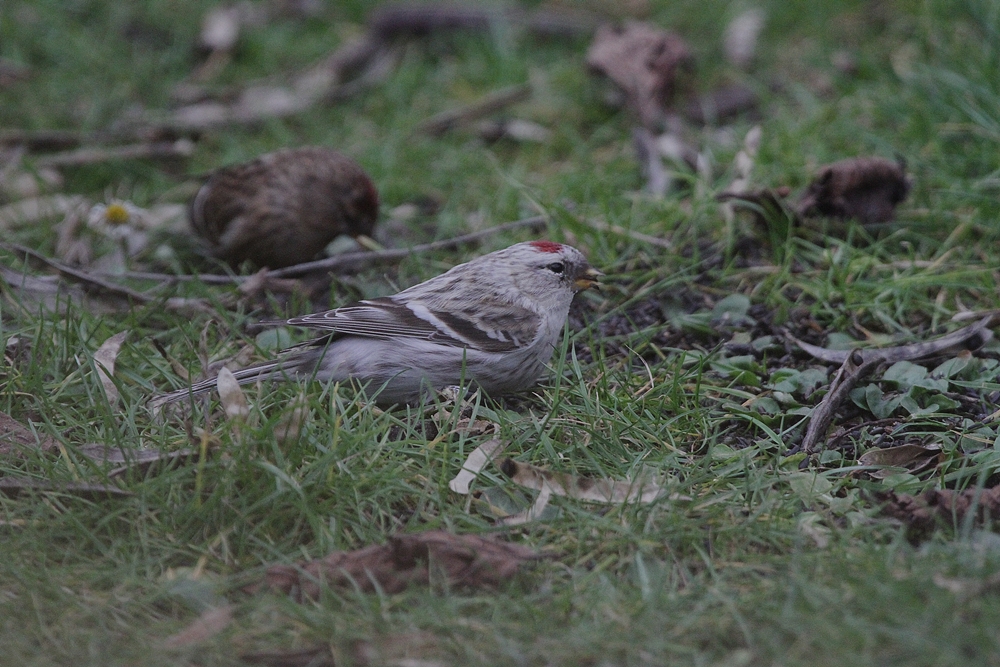
Coues' Arctic Redpoll, Kelling, Norfolk (Photo: Graeme Risdon)
Coues' Arctic Redpoll, Kelling, Norfolk (Video: snakes1000000)
Photo of the Week: 16th–22nd February

Sparrowhawk, Laurieston, Dumfries & Galloway (Photo: Alan McFadyen)
Choosing a Sparrowhawk image again this week takes this species up to the joint number one spot for Photo of the Week appearances with Short-eared Owl, both having featured on twelve occasions since the award commenced in 2004. However, we couldn't overlook Alan McFadyen's superbly timed portrait of a preening male taken at his hide in Scotland. Some people complain about the quality of the light available for bird photography in Britain, especially during the winter. Serious photographers, though, realise that we get some of the best and most varied lighting conditions to be found anywhere in the world and, furthermore, the low-altitude light that lasts throughout the day in winter is ideal for bird photography. In this case, it provided even illumination on an afternoon scene that would have been harshly top-lit at more equatorial latitudes, not to mention marred by heat-haze. Alan's use of a hide is just one way to harness our natural light, allowing control of the lighting direction by the arrangement of perches. Even in the field, though, photographers attuned to the ambient light can take great photos in all lighting conditions, as our back catalogue of Photos of the Week illustrates.
Other notable photos

Snow Bunting, Salthouse, Norfolk (Photo: Ian Curran)

Coot, Yarrow Valley CP, Lancashire (Photo: David Cookson)
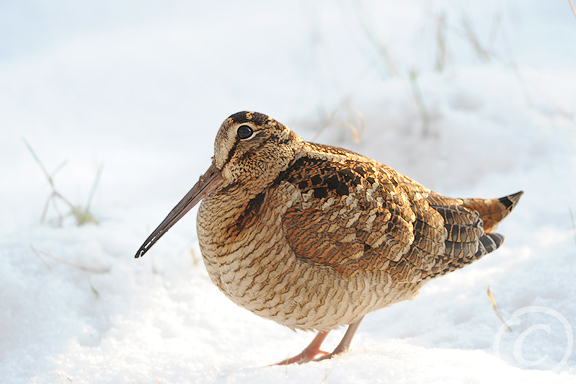
Woodcock, undisclosed site, Suffolk (Photo: Rebecca Nason)

Short-eared Owl, undisclosed site, Northamptonshire (Photo: Carl Day)

Common Kestrel, private site, Essex (Photo: Rob Cross)

Dartford Warbler, undisclosed site, Glamorgan (Photo: Raymond King)

Wren, undisclosed site, Lancashire (Photo: Austin Thomas)

Dunlin, Titchwell RSPB, Norfolk (Photo: Tom Hines)
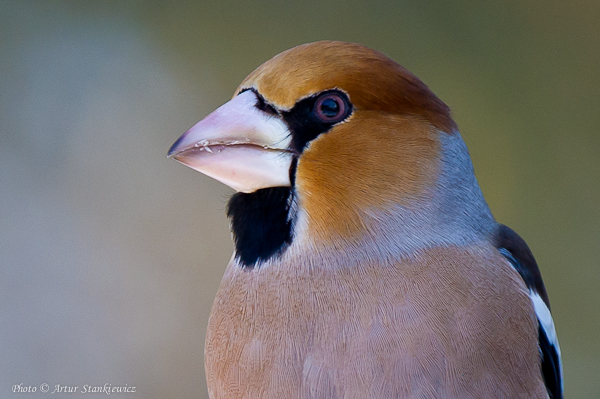
Hawfinch, Poland (Photo: Artur Stankiewicz)

Goldeneye, Maidens, Ayrshire (Photo: Mark Medcalf)

Common Buzzard, Spital, Cheshire (Photo: Steve Round)
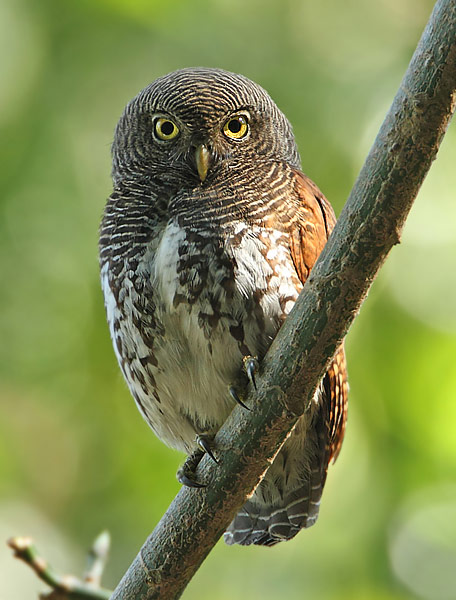
Chestnut-backed Owlet, Sri Lanka (Photo: Gary Thoburn)


